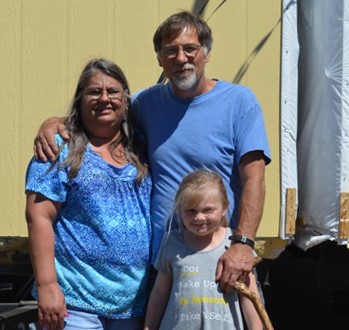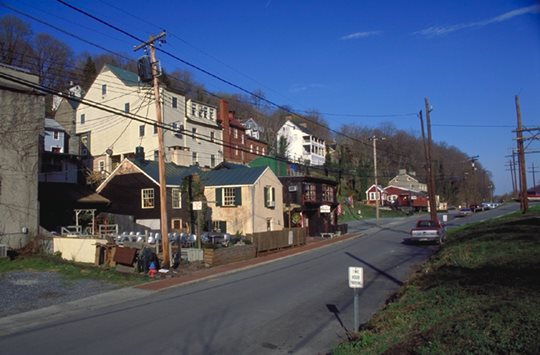 |
| Rural family helped by NeighborWorks Umpqua |
Rural residents face significant barriers to finding and maintaining a safe, decent, affordable home, along with access to credit. Rural areas are marked by higher rates of homeownership and an aging housing stock that is more likely to be substandard. Lower incomes often mean housing inadequacies go unaddressed. Rural poverty, at 17.7 percent, exceeds the national average of 15.4 percent; in addition, 85 percent of all counties with persistent poverty are rural. Although low-income families can be stuck with less-affordable mortgage financing options in almost any market, in rural areas the smaller populations and the remote or scattered nature of the communities are enough to increase costs of lenders and the mortgage products themselves, since competitive financing options often are not available. Lenders operating in rural markets typically charge more and provide fewer products.
Proposed requirements
In recognition of these challenges, the proposed rule requires Fannie Mae and Freddie Mac (commonly called "the enterprises") to improve the distribution and availability of mortgage financing for low- and moderate-income families in three underserved markets — manufactured housing, affordable housing preservation and rural. Activities can include increasing participation in rural loans, modification of underwriting guidelines, and outreach and marketing to rural lenders to facilitate mortgage lending.

Revitalizing rural communities is not a small or simple task. FHFA is aware of the complexities as well. The “mic” now is available to rural housing experts and community development practitioners who can help identify, define and elaborate on issues ranging from existing barriers to rural lending, to how the enterprises can build institutional capacity in rural markets, to how to satisfy the requirements of high-need rural regions.
Special challenges of manufactured housing
Another issue demanding attention is that manufactured housing is a critical source of affordable housing for lower-income households, particularly in rural areas. More than 17 million Americans live in manufactured housing, 91 percent of which is located outside of central cities. The proposed rule aims to expand financing for individual manufactured housing units as well as communities. For individual units, credit only is provided for manufactured homes titled as real property (permanently affixed to real estate). Homes titled as personal property with chattel loans (when permanent attachments are not present) are not eligible. However, during this public comment period, you may weigh in on whether the final rule should allow purchase of chattel loans and on the specific steps that could make such lending less risky. For manufactured housing communities, parks with 150 pads or fewer; are owned by residents or a nonprofit, state or local government agency; or that have strong consumer protections are eligible for duty-to-serve credit.
It is critical for impacted organizations and individuals to weigh in and comment on changes to the proposed rule by the March 17 comment period deadline. The engagement of the community is essential to ensure duty to serve supports efforts to improve affordable housing opportunities for rural and other underserved communities.

